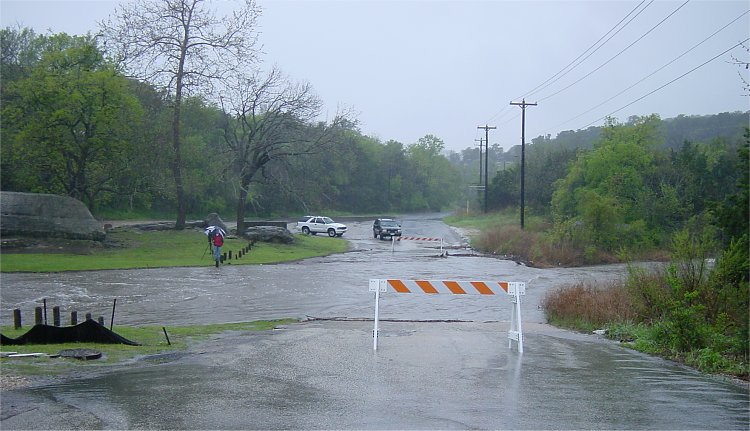With many parts of Texas experiencing prolonged drought conditions, it’s hard to think about heavy rains and flash-flooding until we get rain coming down like it did in the Lake Travis area this past weekend.
A common misconception is that flooding only occurs in river or stream floodplains. This is not always the case — flash-flooding can occur anywhere and oftentimes when you least expect it. Urban areas can be particularly dangerous during flash-floods. Built-up areas cannot absorb water as fast as rural or natural areas. This can often result in overwhelmed drainage systems and dangerously fast-flowing water.
A perfect example of this is what happened at Zilker Park. The final day of Austin City Limits 2013 was cancelled due to flash-flood conditions caused by heavy rains. It’s the first time in the festival’s 12-year existence that a show day has been cancelled. Here are 13 Unbelieveable Pictures of ACL Fest 2013 Flooding.
The total rainfall across much of the Lake Travis area was in the 3 to 6 inch range and the latest river report shows that Lake Travis has risen two feet with the possibility of rising another foot by tomorrow. More rain is expected to fall over the next several days, and along with it comes the possibility of more flooding.
We’re still a long way off from the lake levels that occurred during the Lake Travis Flood of 2007. Back then, we were being told that it would take 10 years to fill Lake Travis — an overnight rain that totaled 19 inches filled it up much quicker…it never hurts to be prepared.
Here are 9 ways you can stay safe and protect your home when the Lake Travis area is receiving heavy rain with flash-flood warnings:
- If you have to leave your home due to flooding, turn off all power at the main circuit box leading into your home. Do not touch any electrical appliances or outlets that are already wet or submerged.
- Move as much as possible upstairs and bring outdoor furniture inside to reduce the amount of potential damage from floating debris.
- When thinking about driving through flood waters, remember Turn Around Don’t Drown – it takes less than twenty-four inches of water to move sport utility vehicles (SUVs) and pick-ups.
- If you have to walk in water, do so only where the water is still and where you can be seen and reached by others. Use a stick or other object to test the ground in front of you.
- Always look for downed power-lines and other electrical outlets that may be submerged – if in doubt, do not enter the water.
Once you have made it to a safe area, there are several important points to remember:
- Only drink water that has been deemed safe by a local authority – flooding can cause septic tank and fuel storage tank leaks, resulting in widespread water contamination.
- Avoid areas where flood waters have recently receded – roads, bridges and walkways may have been dangerously weakened during a flash-flood.
- When you do return to your home, thoroughly check it’s safe to re-enter before going back in. Check completely around the home for loose or downed power lines, gas leaks as well as any structural damage.
- Sewage and chemicals are easily transported by flood-waters, so be sure and disinfect anything that has come in contact with flood-waters.
Check out the Lake Travis Real Estate section for more information on historic landmarks, area neighborhoods, buying and selling tips, and local market conditions.
